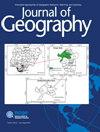Machine Learning-based Geochemical Discrimination Method for Tsunami Deposits and a Simple Determination System
IF 1.8
3区 地球科学
Q1 GEOGRAPHY
引用次数: 2
Abstract
In order to establish a discrimination method for tsunami deposits, a machine learning analysis is conducted for geochemical data to determine paleo-tsunami deposits. Column samples containing tsunami deposits are collected at Noda village, Iwate prefecture, and Wakabayashi-ku, Sendai city, and the distribution of element concentrations are continuously measured. The model is trained by Multilayer perceptron using Noda samples as training data. Combination of elements and number of layers and perceptron are determined by the brute-force search method applied to the Noda samples. The results show that all event deposits determined in the Wakabayashi samples are tsunami deposits. These results indicate the possibility of highly accurate discrimination without being affected by sampling points or depositional ages, or by selecting appropriate supervised data. To combine the techniques of machine learning and geochemical discrimination, simple determination systematics are developed for tsunami deposits using supervised data and analyses of evaluation data.基于机器学习的海啸沉积物地球化学判别方法及简易测定系统
为了建立海啸沉积物判别方法,对地球化学数据进行机器学习分析,确定古海啸沉积物。在岩手县野田村和仙台市若林区收集了含有海啸沉积物的柱样,并连续测量了元素浓度的分布。以Noda样本作为训练数据,采用多层感知器对模型进行训练。通过应用于Noda样本的暴力搜索方法确定元素的组合、层数和感知器。结果表明,若林样品中确定的事件沉积均为海啸沉积。这些结果表明,在不受采样点或沉积年龄影响或通过选择适当的监督数据的情况下,有可能进行高度准确的区分。为了将机器学习和地球化学判别技术结合起来,利用监督数据和评价数据分析,开发了海啸沉积物的简单测定系统。
本文章由计算机程序翻译,如有差异,请以英文原文为准。
求助全文
约1分钟内获得全文
求助全文
来源期刊

Journal of Geography
GEOGRAPHY-
CiteScore
4.90
自引率
6.50%
发文量
12
期刊介绍:
Journal of Geography is the journal of the National Council for Geographic Education. The Journal of Geography provides a forum to present innovative approaches to geography research, teaching, and learning. The Journal publishes articles on the results of research, instructional approaches, and book reviews.
 求助内容:
求助内容: 应助结果提醒方式:
应助结果提醒方式:


